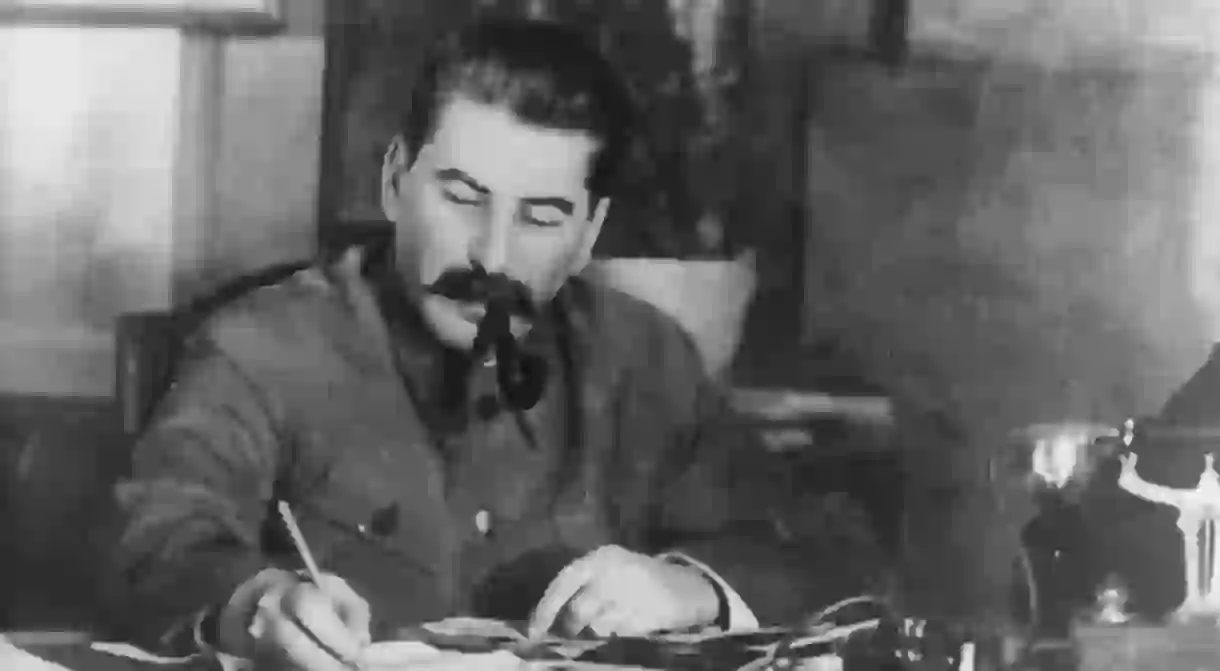The Teens Behind the Anti-Stalin Communist Uprising

Stalin’s time at the helm was not without resistance. It did not follow that those Soviets who were loyal to Lenin, the social revolutionary and proletarian liberator, were loyal to his iron-fisted successor. As life under Stalin’s rule grew tougher and harder, idealistic youth banded together with plots to overthrow the dictator.
Early Stalin opposition came from free-thinking young people. As much as the younger generation were a huge asset to the regime for their energy and malleability, their potential to resist conformity and act on free will was regarded as a risk by the government. Despite the establishment of the Komsomol, a youth Communist league that served to indoctrinate teenagers and children into the party’s belief system, not all youngsters were so easily controlled.
Soviet society was tired and broken from the atrocities of the Great Terror and WWII. From 1934 until the end of the 1930s, Stalin first purged the Communist Party and then the Soviet public of ‘dissidents’ who were mostly innocent people that had been tortured into false admissions and sentenced to hard labour in the gulags or executed.

Despite emerging victorious from the War, it had devastated the USSR. Furthermore, many Soviets understood the nation’s victory was due to the efforts of soldiers and civilians, not Stalin. As Soviet Russia repaired itself, the people were quietly realigning their allegiances to the regime and their leader. Around this time, groups of teenagers began to form up and down the nation. Each group was short-lived but ambitious, and indicated that the zeitgeist of the time implored for a more democratic style of communism.
Although the groups were unrelated to each other, they were joined by their hatred of Stalin, despite being committed Communists and Marxists themselves. In a brave display of youthful idealism, these teenagers met in clandestine meetings to plot and scheme how they could dethrone Stalin and reassert the more liberal leanings of Lenin.

One such group called themselves The Communist Youth Party (CYP), which sprang out of the southeastern town of Voronezh and was led by teenager Boris Batuev, the son of a local party official. Batuev rallied 60 boys together who met for two years before their discovery in 1949. Although their meetings didn’t amount to physical action, their Manifesto declared that they would ‘follow the ideas of Lenin and fight for the overthrow of the Stalinist regime’. And so, as these young men were just graduating from high school, the majority of them were arrested, tortured and then sent to the gulags.
Another group of 16-year-olds from Jalal-Abad in the Kyrgyz Republic who called themselves True Communists lasted only a few months. Their end came when the two leaders began to hand out pamphlets and were subsequently sentenced to ten years in the hard labour camps.

The fleetingness of each group was due to the widespread practice of denunciation, which sent the adolescents to the authorities upon discovery. The majority of kids involved in the anti-Stalin underground movement were sent to the gulags for organising or participating in ‘counter-revolutionary groups’. The average punishment used to be between 10 to 25 years in the gulag system, which was sometimes reduced for those who were still in school. However, some of these teenagers and young adults paid the ultimate price for standing up to their autocratic leader.
Subkultura, Stories of Youth and Resistance in Russia 1815-2017, by Artemy Troitsky, has been co-published by The New Social and HOME.













